Stereoscopic Imaging
Photography
I was tasked with going out into the world to photograph everything interesting in stereo. I also tried to see what I could get away with or what would hurt too much.
-
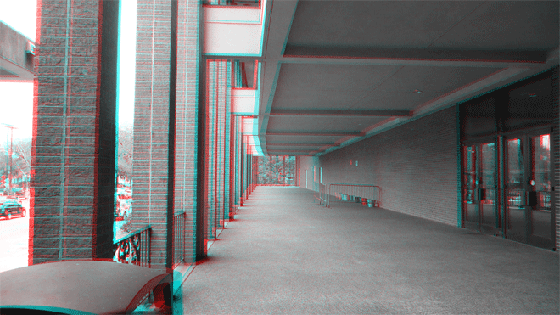 Linear Perspective / Retinal Angle
Linear Perspective / Retinal Angle
-
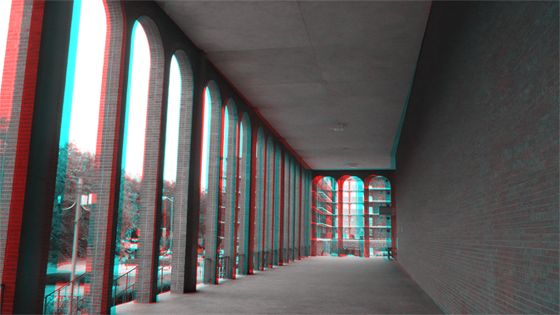 Linear Perspective/ Texture Gradient
Linear Perspective/ Texture Gradient
-
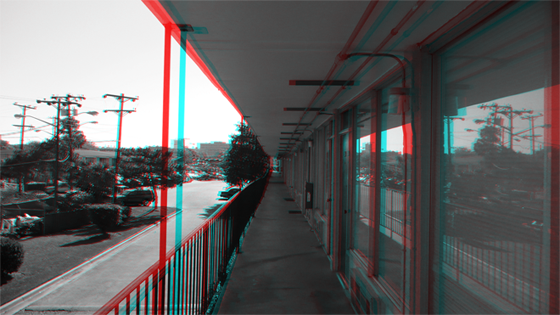 Linear Perspective
Linear Perspective
-
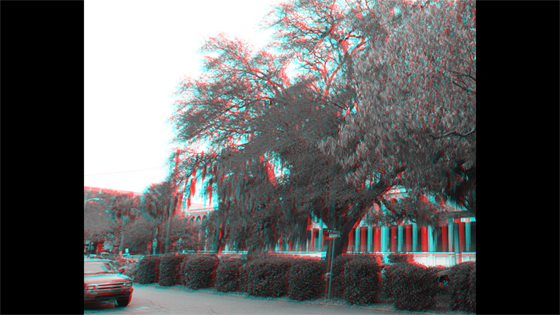 Aerial Perspective / Retinal Angle
Aerial Perspective / Retinal Angle
-
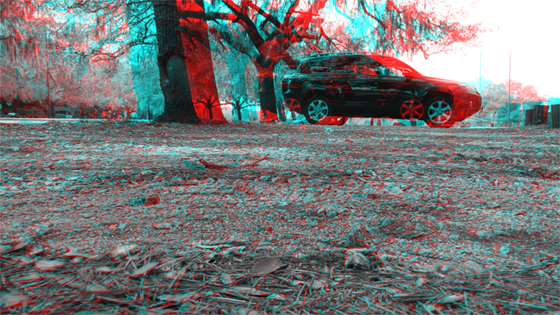 Aerial Perspective / Texture Gradient
Aerial Perspective / Texture Gradient
WARNNING - Might Cause Discomfort -
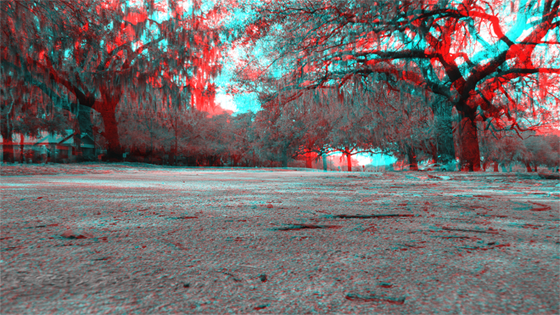 Aerial Perspective
Aerial Perspective
WARNNING - Might Cause Discomfort -
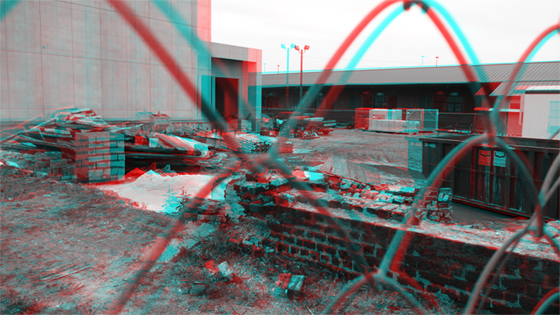 Interposition (Occlusion)
Interposition (Occlusion)
WARNNING - Might Cause Discomfort -
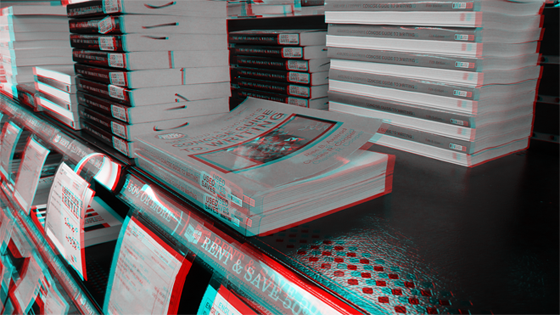 Interposition (Occlusion)
Interposition (Occlusion)
-
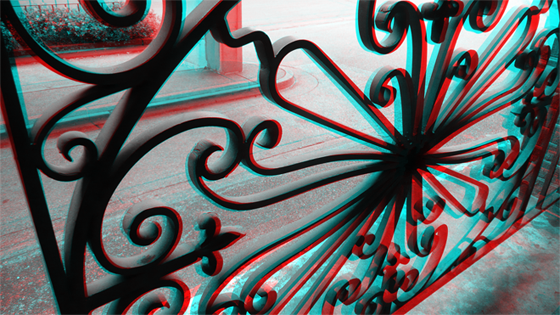 Interposition (Occlusion)
Interposition (Occlusion)
-
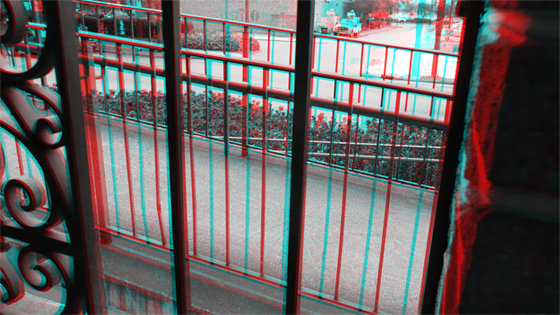 Interposition (Occlusion)
Interposition (Occlusion)
-
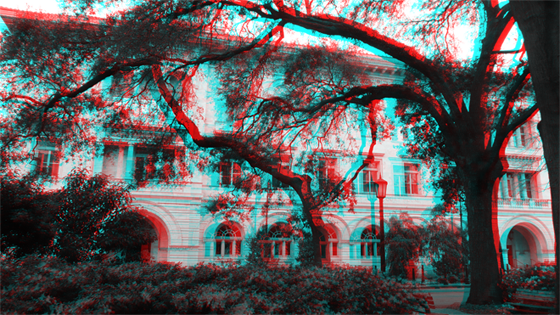 Interposition (Occlusion) / Artistic
Interposition (Occlusion) / Artistic
-
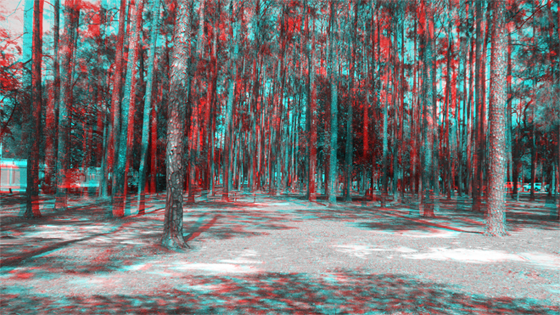 Interposition (Occlusion) / Time of Day
Interposition (Occlusion) / Time of Day
-
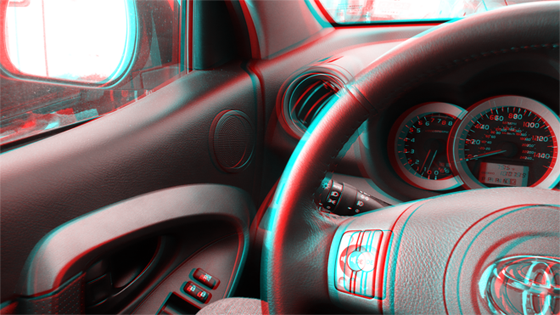 Retinal Angle
Retinal Angle
-
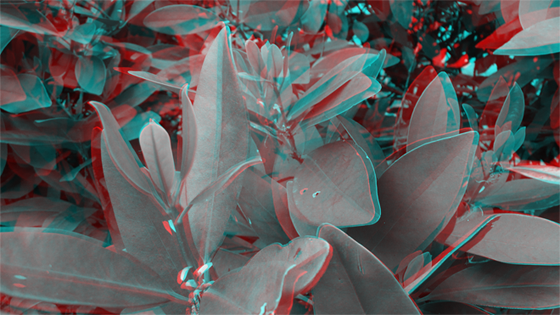 Depth of Field
Depth of Field
-
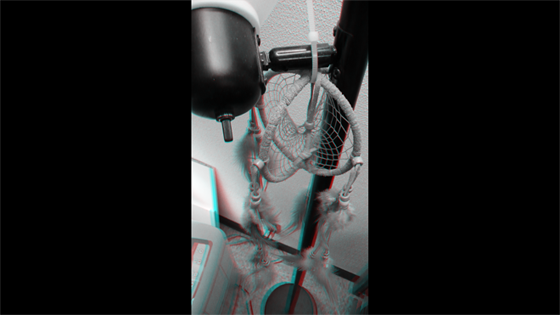 Depth of Field
Depth of Field
-
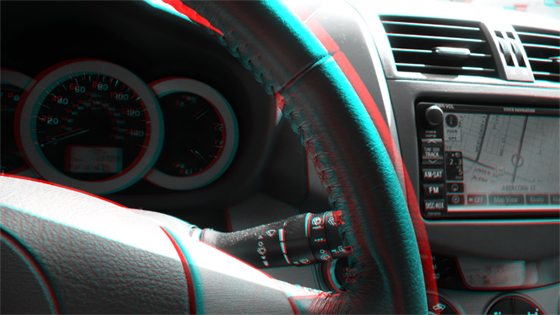 Depth of Field
Depth of Field
-
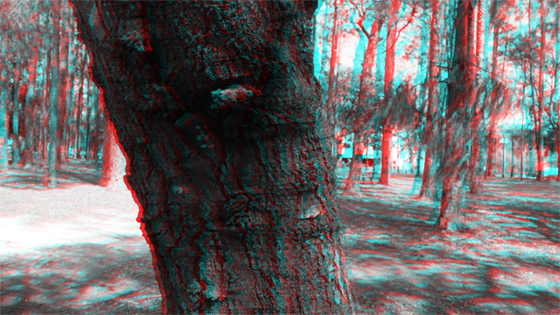 Depth of Field
Depth of Field
-
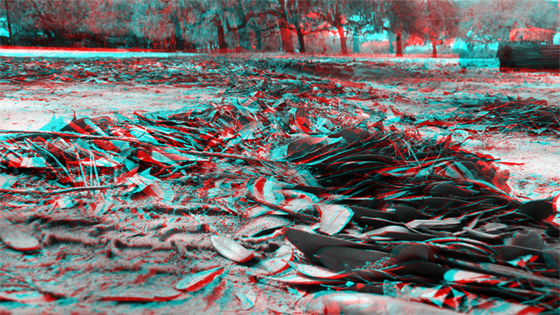 Depth of Field
Depth of Field
WARNNING - Might Cause Discomfort -
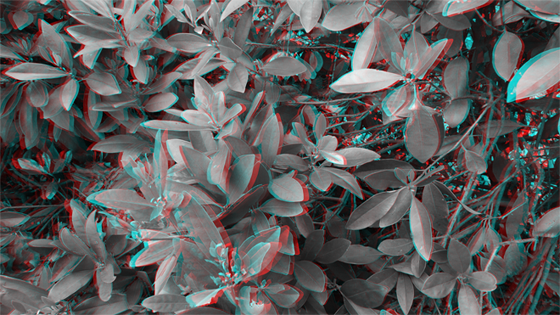 Zero to Negative Parallax
Zero to Negative Parallax
-
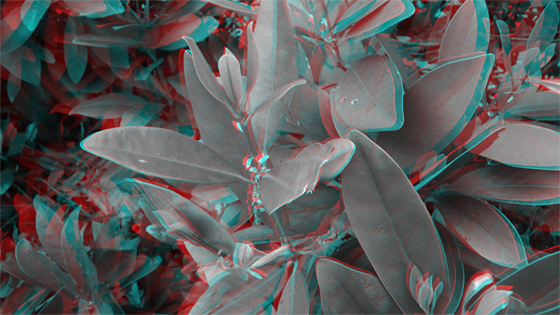 Positive to Negative Parallax
Positive to Negative Parallax
-
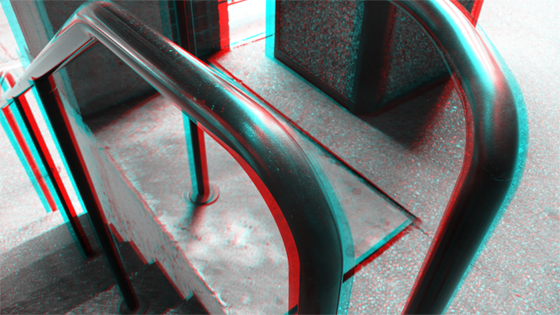 Positive Parallax
Positive Parallax
-
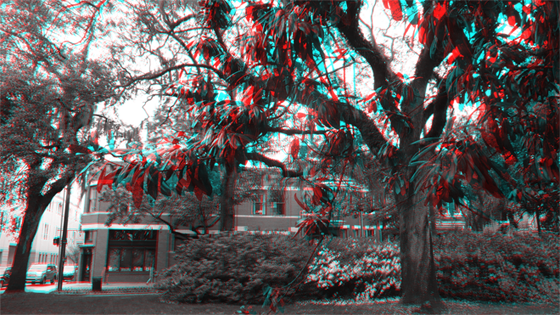 Zero Parallax
Zero Parallax
WARNNING - Might Cause Discomfort -
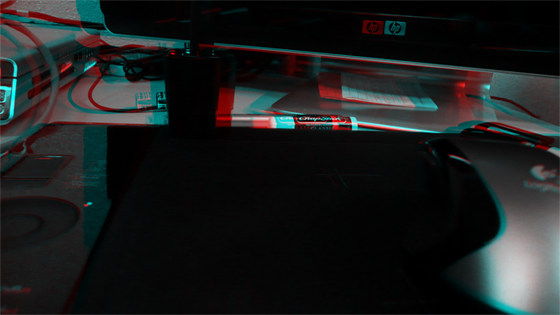 Reflections/Specular Highlights
Reflections/Specular Highlights
-
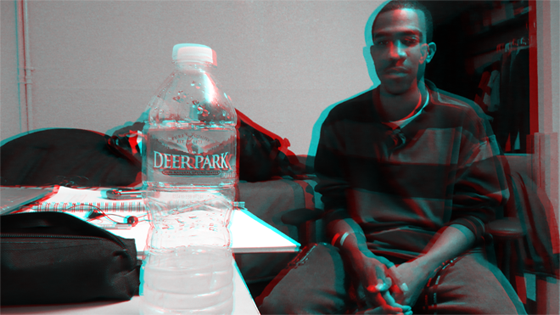 Reflections/Specular Highlights / Transparency
Reflections/Specular Highlights / Transparency
-
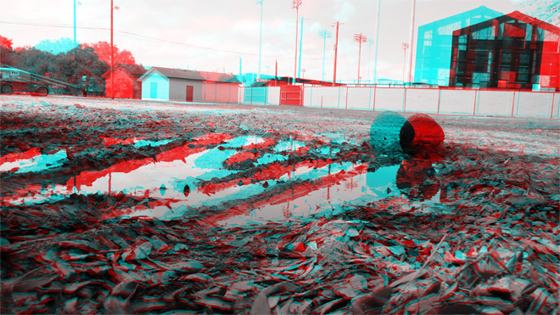 Reflections/Specular Highlights
Reflections/Specular Highlights
-
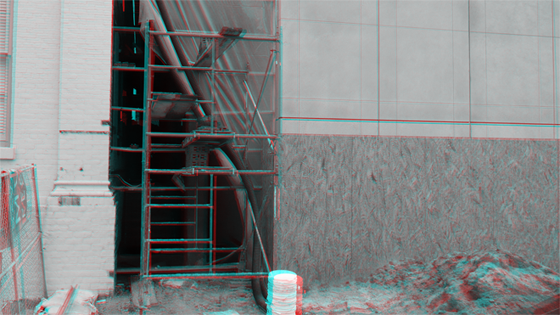 Transparency
Transparency
-
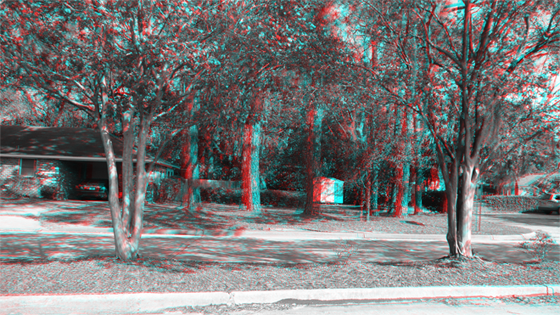 Time of Day
Time of Day
-
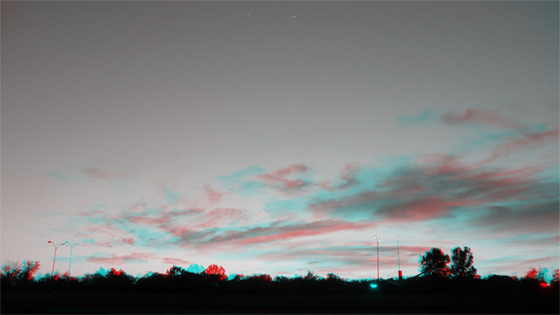 Time of Day
Time of Day
-
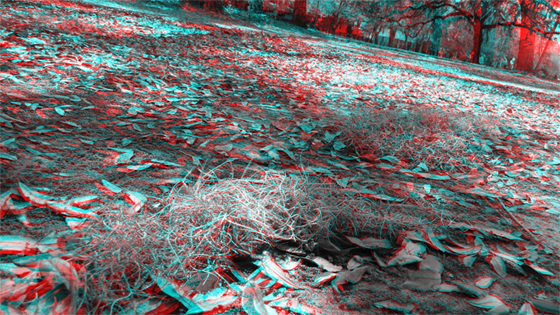 Time of Day
Time of Day
-
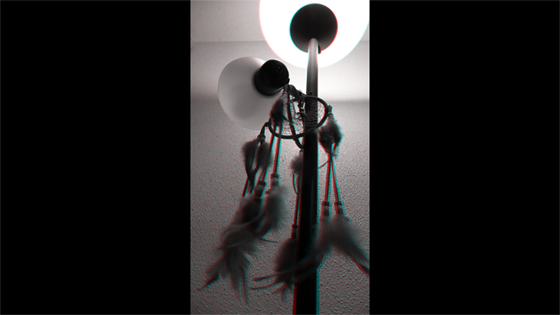 Artistic
Artistic
-
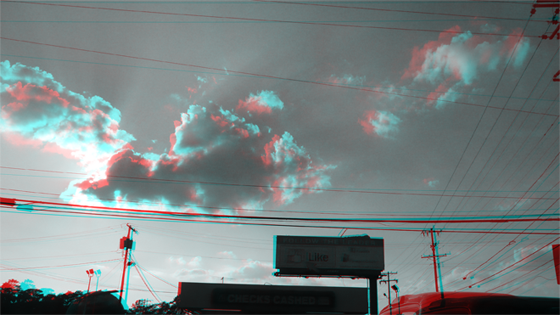 Artistic
Artistic
-
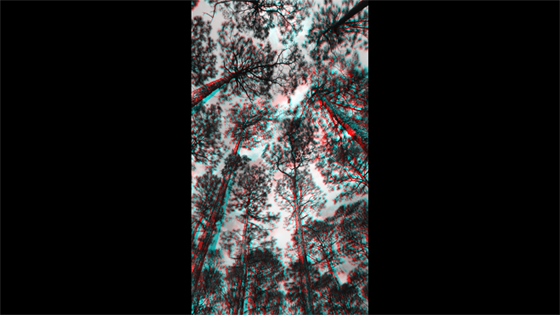 Artistic
Artistic
-
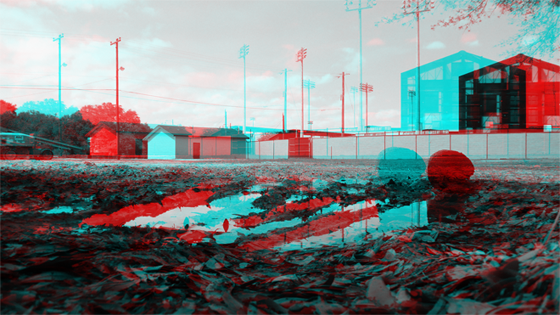 Artistic
Artistic
WARNNING - Might Cause Discomfort -
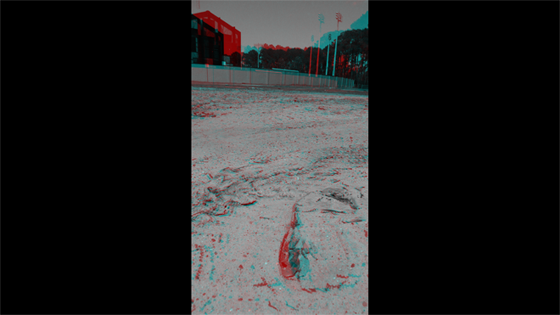 Artistic
Artistic
WARNNING - Might Cause Discomfort -
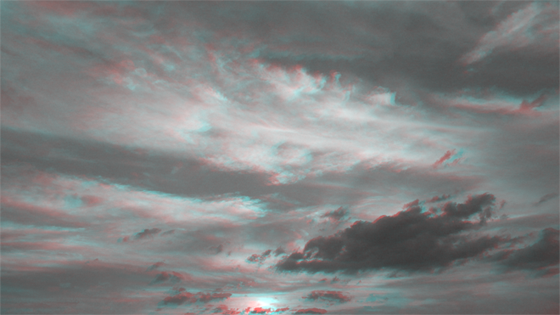 Artistic
Artistic
Overview
This assignment was pretty straightforward - just go out and photograph the world in stereo. We were to observer different visual depth cues and to observe how they affect the perceived depth of an image, whether it was a stereo image or not. We were also required to observe how simple things such as reflectivity and specularity and how viewing that subject matter is radically different and more complex in stereo. The overall goal was to try to create beautiful images, in and out of stereo, while specifically working to reduce any viewing discomfort - i.e. cross talk, pinning, etc. I will have to warn everyone though, I did try to push those things a little far and so there may be some discomfort with some images. I wanted to see how much depth I could create, or see how far out I could bring something while still trying to push the rest of the environment back far. I just experimented and had a lot of fun. I took and made WAY more stereo images than what you see here.
Review
What I Learned/Challenges
- I learned a LOT about how stereo works and what hurts and what is comfortable.
- I learned about cross talk, both in taking a photograph and in converting it to a working anaglyph image.
- Frankly, I learned the most about stereo with this project, and this project was the most fun!
Future Improvements
- Take more pictures!!!
Hypostereo / Orthostereo / Hyperstereo
Below are my three examples of an environment that demonstrate the differences between Hypo-, Ortho-, and Hyperstereo. Please note that the Hyperstereo is likely to be very uncomfortable.
Image set one.
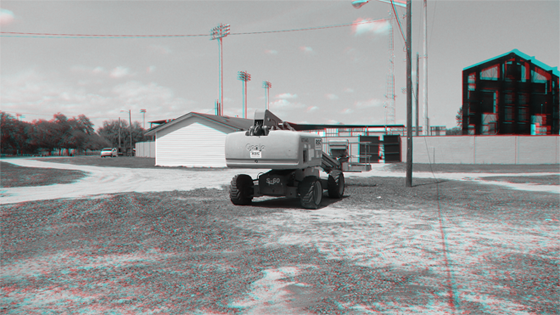
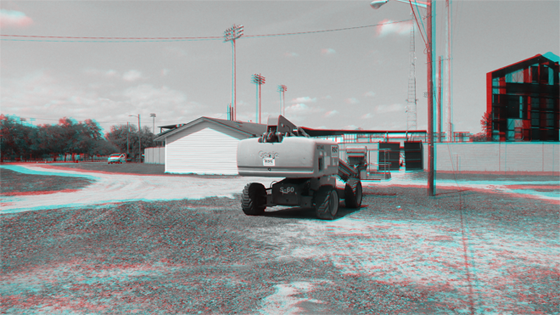
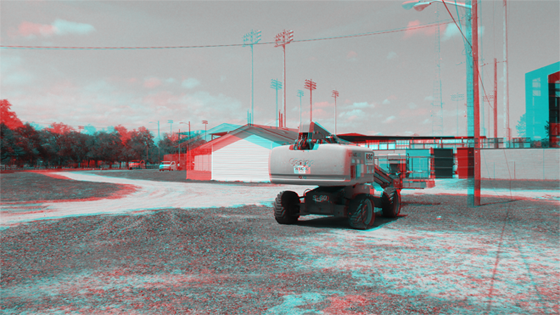
Image set two.
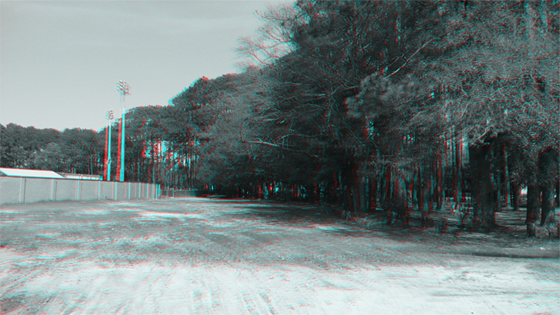
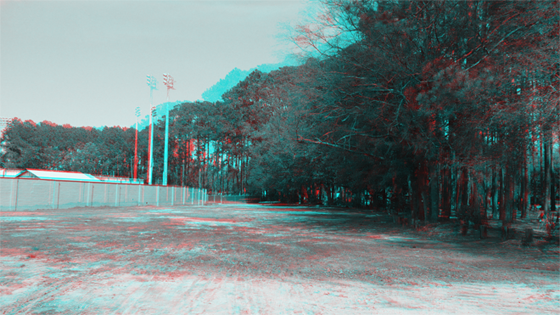
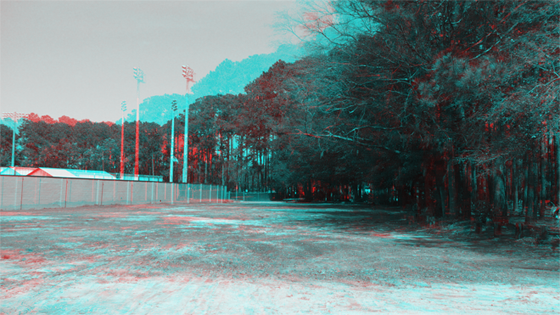
Image set three.
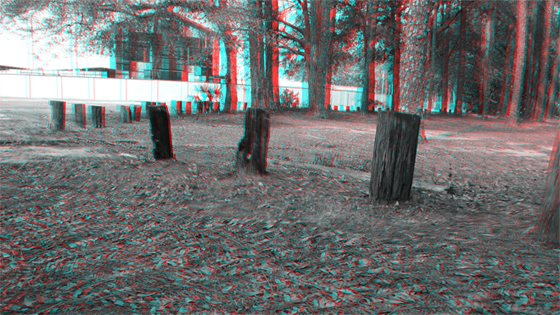
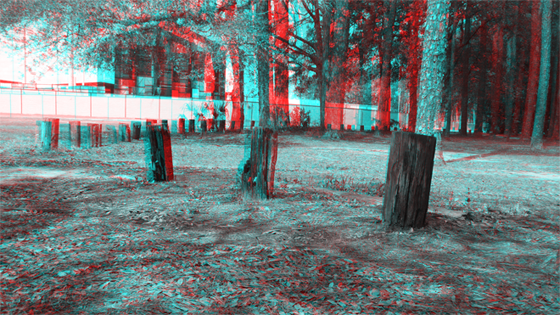
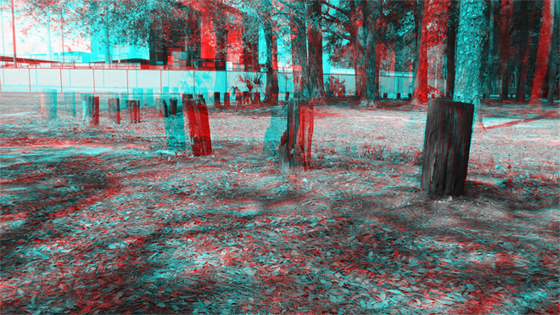
---------------------------------------------------------
This class introduced the founding principles of stereoscopic imaging and it's applications, restrictions, limitations, and development in a variety of mediums. It highly encouraged experimentation to help the class further it's understanding of stereo and simply what works and what doesn't work.
All work was developed for viewing anaglyphicly using Red/Cyan (or Red/Blue) glasses since that was the best and easiest method to review the work during the development process. If you want to get your own anaglyph glasses, check Rainbow Symphony (they will also send you a free pair of anaglyph glasses if you send them a self-addressed, stamped envelope). I do still have the full color original sources if they are desired, I simply don't have a way to display or view them myself.
